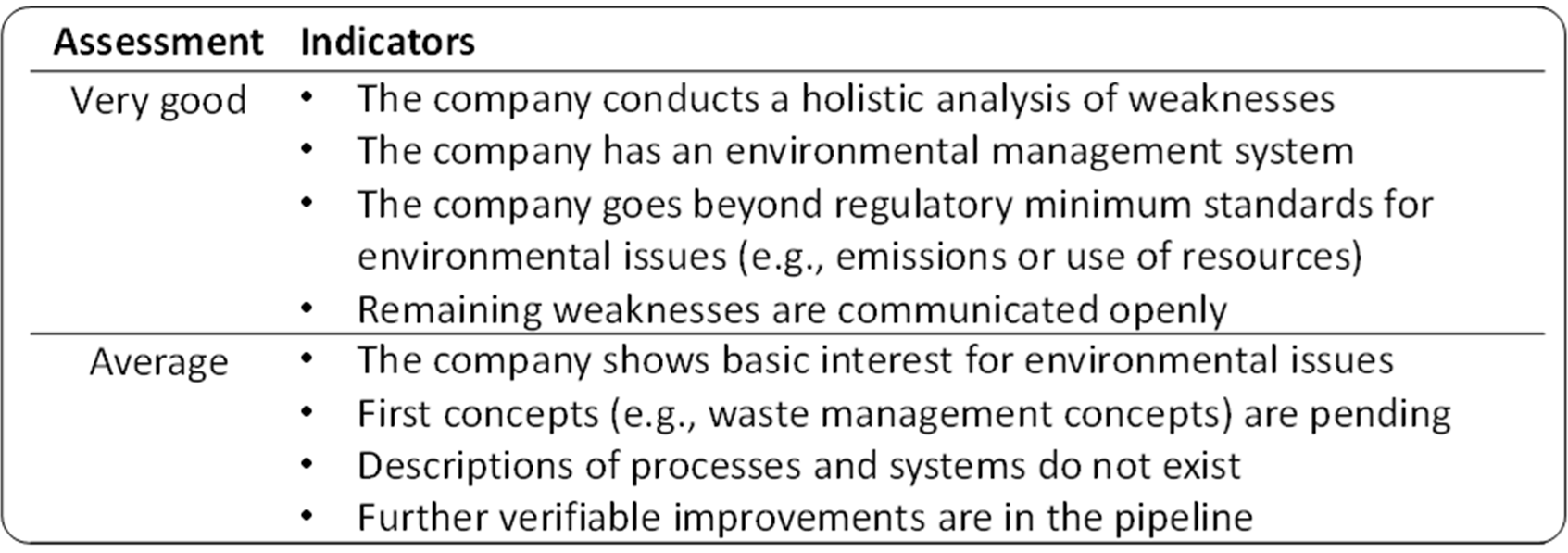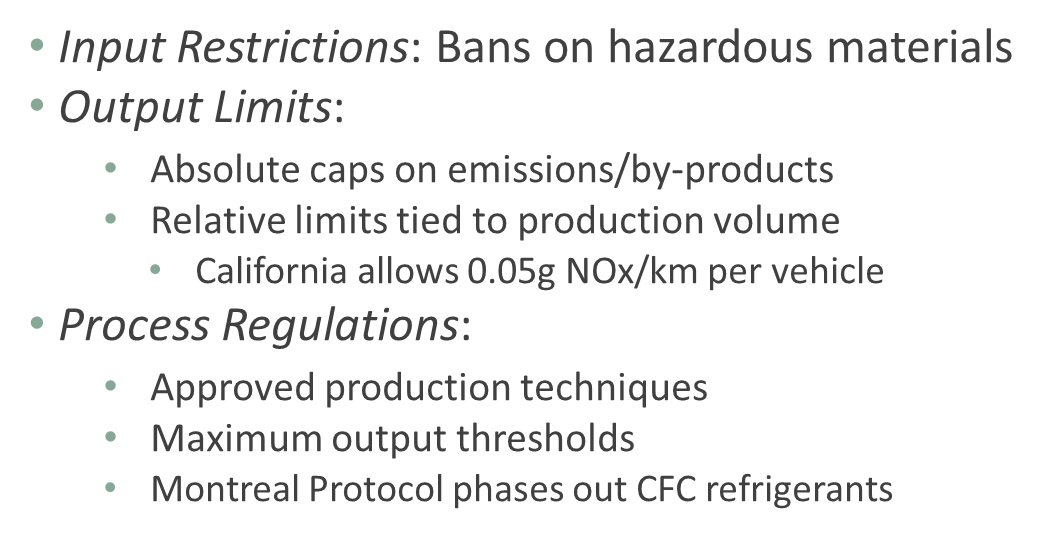Sustainability management Test 2 Slides C3 and C4
1/74
There's no tags or description
Looks like no tags are added yet.
Name | Mastery | Learn | Test | Matching | Spaced |
|---|
No study sessions yet.
75 Terms
Supply Chain
includes all parties involved in fulfilling a customer request, such as manufacturers, suppliers, transporters, warehouses, and retailers.
Charactertization of supply chain management and the focal firm
•Purpose: Coordinate relationships to:
Boost competitive advantage (e.g., faster delivery).
Maximize total surplus (profit + social/environmental value).
focal firm
Central company shaping the supply chain through decisions, selecting suppliers and distributors, and interacting with consumers. It designs key product aspects, influencing characteristics and sustainability impacts, but may not produce the product (e.g., outsourcing).
Sustainable supply chain management (SSCM)
•Integrates triple-bottom-line goals:
•Economic (profit)
•Environmental (planet)
•Social (people)
Manages material, information, and capital flows while considering sustainability goals from all three dimensions: economic, environmental, and social
Challaneges for sustainable supply chain management
strutural challenges
multi-tier netowrks
transparency gaps
Dynamic pressures
External forces
governments
Customers
NGOs
Multi-tier netwoks
3+ supplier tiers (e.g., raw materials → parts → assembly)
Example: Apple works with ~2,000 suppliers across 43 countries
Transparency Gaps
Critical data (e.g., labor conditions, emissions) lost across tiers
Only limited number of firms track Tier 3+ suppliers
External Forces
Governments: Weak enforcement (e.g., <30% of ESG fines collected in EU)
Customers: 68% demand sustainability but reject price hikes
NGOs: Targeted campaigns (e.g., Greenpeace vs. fast fashion) often lack public traction
Two prototypical strategies to increase sustainability in supply chains
Supplier Management (Risk-Focused)
Sustainable Product Supply Chain Managment (innovation focused)
Supplier Management Goal
Mitigate risks in existing supply chains
Supplier Management Approach
•Screen suppliers using sustainability criteria (e.g., carbon footprint, labor practices)
•Reactive: Address issues post-identification (e.g., audits, corrective action plans)
Supplier Management is best for
Compliance-driven industries (e.g., electronics, apparel)
Sustainable Product SCM Goal
Design greener products through supply chains
Sustainable Product SCM Approach
Proactive: partner with suppliers on eco-design (ex. recycled materials)
Embed sustainability in product lifecycle (ex. from sourcing to disposal)
Sustainable Product SCM is Best for
Differentiated brands (ex. Patagonia, IKEA)
Core steps in supplier management for risk and performances
Commit, Evalute, Control, Develop
Commit
Commit suppliers to sustainability related minimum standards
Evaluate
Evaluate suppliers based on sustainability criteria
Control
Control suppliers via audits
Develop
Develop suppleirs to improve practices and performance
Commit suppliers to uphold certain sustainability-related minimum standards
Ex. supplier codes of conduct:
Form of voluntary commitment Content, form, and implementation not regulated
Can provide recommendations for behavior of suppliers or their employees, suggested courses of action, or certain measures which should be taken
Company-own or external code of conduct
Commit suppliers to have certain sustainability-related certificates
Provide incentives such as price premiums for suppliers with sustainability-related certificates
Very common for quality and environmental management systems standards
Social standards less widespread
Evaluate sustainability-related information as part of risk management
Self-asessments, Risks
Self-assessments
suppliers provide inforamtion usually though one-time or epriodic questionnaires
Self-assessments benefits
Relatively inexpensive → Can be used even with limited financial or human resources
Indicate areas where audits or supplier development measures might be necessary
Risks
•Prone to social desirability bias
•Widespread adaptation of self-assessments may lead to evaluation fatigue
Industry standards, software solutions, and platforms for supplier assessments aim
at reducing transaction costs for both sides
Exemplary criteria for an ecological supplier evaluation
assesment and indicatiors

Audits in a sustainable supply chain management
Focus on environmental and social issues, unlike regular audits, which focus on quality
they can cover products, processes, or verify enviormental/social management systems
Types of Audits
First, Second, and Third party
First-party audit
Internal audit by employees or paid individuals to uncover weaknesses, with no personal interest in results.
ex. A food processing company conducts an internal hygiene audit at its own plant. Their quality assurance team inspects cleanliness, checks if protocols are being followed, and identifies gaps in procedure.
Second-party audit
External audit by a company at its suppliers, more formal and impactful on relationships.
ex. A large retail chain like Walmart audits a supplier’s warehouse to ensure it meets the company’s standards for safety, labor practices, and delivery reliability.
Third-party audit
Independent external audit, initiated and paid by the company, to check compliance and issue certification if requirements are met.
ex. A bakery hires a health inspector from a certified agency to check if the kitchen is clean enough to get an official hygiene certificate.
Decommoditizing
Treating a supplier or supply chain of a commodity as if it provides a rare, strategic input
Byproducts
secondary products from primary production (ex, buttermilk, sawdust, waste heat).
Eco-efficiency
improve process efficiency, reduce by-products
Eco-effectiveness
reuse by-products within the company or for others (ex. waste heat for energy, sawdust for oriented strand boards).
Reduction
is the top choice: minimizes waste and harmful substnaces, only provide necessary goods
How is reduction achieved?
by reducing input (e.g., less offcuts, thinner materials) or substituting harmful substances.
no further processing needed later in the product life cycle.
Reuse
Second-best option: give products a second life through refurbishing.
Common in households (e.g., buying used goods), but less common in production.
Parts can be reused in new products or repairs.
Recycling
Third-best option, reprocessing waste into new products or materials, either for the same or different purposes
Mechanical, Chemical, Biological
Mechanical Recycling
Crushing, melting plastic for reuse
Chemical Recycling
converting plastic into basic chemicals
Biological Recycling
compsoting plastic to biomass using organisms
Recovery and disposal
Least favored
Incineration recovers energy from waste.
Disposal should only be used when no alternatives exist, and done responsibly (e.g., limit wastewater discharge to protect the environment).
Waste Heirarchy
Reduce, reuse, recycle, repair/recover, dispose
Sustainability in business is increasingly shaped by formal regualtions across two key dimensions.
Social Compliance
Enviormental controls
Social Compliance
Minimum wage requirements
Occupational health & safety standards
Enviormental Controls

Output limits:
Absolute caps on emissions/by-products
Relative limits tied to production volume
California allows 0.05g NOx/km per vehicle
Sustainable product design: Lifecycle approach
Design Phase Decisions
Key considerations
Design Phase Decisions
Most impactful stage
Example: Tesla’s battery design reduces colbat use by 60% from Day 1
Key Considerations
•Customer needs:
Example: Patagonia’s washable wool reduces dry-cleaning waste
•Environmental impact:
Example: IKEA’s flat-pack furniture cuts transport emissions by 30%
Designers can improve sustainability through
Eco-efficiency: using lightweight or energy-efficient materials
Eco-effectiveness: choosing nontoxic, reusable materials
Sufficiency: creating durable products for sharing
Most products’ biggest impacts occur during
USE not production
Example: A washing amchine uses 85% of its totoal energy during laundry cycles not manufacturing
The Lifecycle Blind Spot
•Traditional focus: Optimized factory efficiency (e.g., Toyota’s 10% production waste reduction)
•Missed opportunity:
•Example: Early refrigerators consumed 2x more energy than modern eco-models
Manifold opportunities for implementing idea of sustainability in product design Examples
Lighter vehicle materials reduce energy use.
Better insulation lowers heating/cooling needs.
Durable or modular designs extend product life, reducing new product demand.
Usage Intensity
High Intensity: Frequent or shared use → Maximizes utility per unit produced
•Examples:
Car-sharing (Zipcar): 1 vehicle serves 10+ users daily
Low Intensity: Infrequent or single-user use → Often leads to underutilization
•Examples:
Formal suits: Worn 5x/year but require dry-cleaning resources
Produt Lifespan
Long Life: Durable, repairable, or upgradable designs
•Examples:
Solid wood furniture: Generational use (30+ years)
Short Life: Disposable or rapidly obsolete products
•Examples:
Single-use coffee pods: Used once, non-recyclable materials
Usage Intensity and Lifespan Crossover

Scenarios of reduction-oriented product use concepts
First Scenario, Second Scenario, Third Scenario, Fourth Scenario
First Scenario
Extending product life by reducing wear using durable materials, gentler use, or encouraging proper usage. It fails if customers don't use products longer, even when still functional.
Second Scenario
Extending product use by ensuring they last until the end of their technical life. Strategies include timeless designs, modular designs for updates, or extended software updates for smartphones.
Third Scenario
Increasing product usage over its lifetime: Scenario 3.1, 3.2
Scenario 3.1
Running production lines continuously for better eco-efficiency.
Scenario 3.2
Car-sharing or rentals to increase vehicle utilization.
More frequent use benefits more people, reducing the need for new products.
Fourth Scenario
Increasing product use intensity at any given time:
Ex. adding capacity to public transport (e.g., double-decker buses) or carpooling.
If we can increase usage intensity
We can create a good impact on the enviorment
Sustainability applies to all production stages:
Input, transformation, output
Input
reduce raw materials, use recycled materials, minimize harmful substances
Transformation
cut energy/ consumable use, ensure safety and decent working conditions
Output
reduce waste, produce energy-efficient products, minimize unused by-products, extend product life
Enviormental focus:
input and output
Social focus:
transformation
Examples of Operational Optimization
•Product level: product miniaturization, redesign of packaging, reduction of hazardous materials
•Organizational level: more resource-efficient processes, improved waste management
Examples of Organizational transforamtion
•Sharing economy
•Services that otherwise change consumption habits such as replacing physical with electronic services
•Products specifically designed to cater to need of poor populations